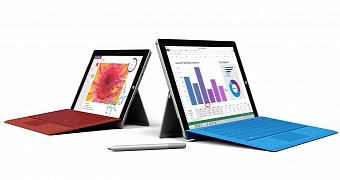An update that will be made to the Linux kernel will bring a long series of improvements that will include support for Microsoft Surface 3’s touchscreen, thus making it possible to benefit from the full power of Linux on a Microsoft device.
As we’ve reported to you earlier today, Linux kernel 4.8 will be the version that’ll include full support for touchscreen capabilities on the Surface 3, and version RC1 is already available for those feeling adventurous and willing to test it before the stable release goes live.
But what does this update mean for Microsoft users? Basically, it’s the opportunity to run Linux on a device that’s getting older, without losing capabilities offered by the touchscreen.
Full support for touch interaction
First and foremost, it’s worth noting that we’re talking about the Surface 3 here, and the not the Surface Pro 3. The difference between the two is huge, and the Pro 3 is more of a productivity machine, as it’s also available with more powerful processors and offers more advanced capabilities.
The Surface 3 is shipped with an Intel Atom x7-Z8700 processor, up to 4GB of RAM, and 128 GB of storage, while the top Surface Pro 3 configuration boasts a larger 12-inch screen, an Intel Core i7 chip, 8 GB of RAM, and 512 GB of storage.
The Surface 3 was already capable of running Linux (and so was the Surface Pro 3, obviously), but without proper drivers, some touch features didn’t work exactly as expected. The best example is the browsing experience where touch interaction didn’t work correctly - in Firefox, instead of pinch to zoom, the browser only selects text. Without a doubt, however, Linux apps still need updates to fully work with touch.
By adding full support for Microsoft Surface 3’s touchscreen, the Linux kernel opens the door to the open-source world for more Microsoft users, and there are plenty of those who’d gladly accept the transition, especially on older devices. Linux runs more smoothly and is better optimized for older hardware, whereas Windows is losing ground in this regard, and hardware upgrades are necessary to enjoy the full package of the latest releases.
It remains to be seen how many Surface 3 users will actually give up on Windows to move to Linux thanks to this new kernel update, but the battle is getting more interesting since they now have a worthy alternative to Microsoft’s operating system.

 14 DAY TRIAL //
14 DAY TRIAL //